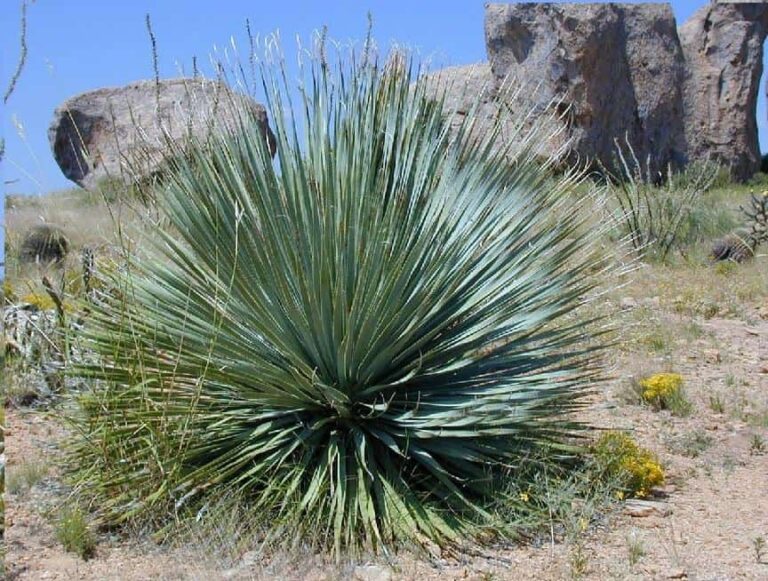Coconut Tree VS Palm Tree
There are many things that make coconut trees and palm trees two very different things, but if you don’t know about these characteristics, then it is very easy to confuse the two. There are various different species of palm trees, but there is only one type of tree that can create coconuts, so what makes them different?
Coconut trees are actually a type of palm tree that has various similarities with them, but not all palm trees are able to produce coconuts.
The main difference between these two trees is in the leaves, and this is because palm trees will have fan-shaped leaves, whereas coconut trees have wide leaves. As well as this, coconut trees will create coconuts, and palm trees will produce palm oil.
In this article, we are going to be comparing the palm tree with the coconut tree, so you can find out exactly what makes them different. There are various different characteristics that make these two types of trees different from one another, and we are going to explore all of these differences here.
Coconut Tree VS Palm Tree
Coconut trees can look very similar to each other, but they typically vary in both thickness and size. There are lots of coconut trees that will have slender trunks and an average height of around 80 feet. As well as this, the base of the tree is usually very thick. However, a coconut tree is very different from a normal palm tree.
Although both of these trees are classed as palm trees, a palm tree does not produce coconuts. A palm tree is essentially a term that groups together all trees that fall under the Palmaceae classification. This covers more than 230 different tree families, as well as around 3000 species.
Every type of palm tree will be identical when it comes to their leaves, as they have a type of laf that is called a frond. These are leaves that will have a fan-like structure and shape that will have sections that grow outwards from one single point. Each type of palm tree species will have a different length of leaves, and some of them can grow up to 10 feet.
Botanically, coconut trees will last for around 60 to 80 years, and they are often referred to as a three-generation tree, due to the fact that it is able to support up to 3 generations. However, they are not the fastest of trees, and they will only produce coconuts for between 6 and 10 years. On the other hand, there are some palm trees that can last for up to 150 years.
Palm trees typically have a lifespan of between 70 and 80 years on average. However, the overall lifespan of a palm tree will depend on the exact species of palm tree. There are some that will be able to live for more than a century, and those that are grown in tropical environments will usually live for between 70 and 100 years.
Growing Conditions
Coconut trees usually grow the best in wet and tropical climates, which means that they will need a good amount of moisture and warmth in order to grow well. Palm trees do grow better in tropical climates, even though they can suit various different climates.
Something else that you should know about palm trees is that they are easily affected by extreme cold temperatures, especially during the cold of the winter.
When you compare the two trees, coconut trees and palm trees will both grow in different climatic conditions. This is something that will contribute to the different characteristics and features that they each have.
Can All Palm Trees Produce Coconuts?

No, even though all palm trees do belong to the same family, and the coconut tree is a type of palm tree, this is the only type of palm tree that has the ability to produce coconuts. Although, there are various different types of coconut trees in existence.
The Cocos nucifera is the only type of palm species that is able to produce coconuts. Other types of palm trees are able to produce palm oil. These two types of tree do look similar though, which is why people might assume that they all produce coconuts. Although, they are both two very different species of palm tree.
Which Type Of Palm Tree Can Produce Coconuts?
The Cocos nucifera palm tree species is the only type of palm tree that is able to produce coconuts. This is the only species of the genus coco that is still around today. Although, there are two categories when it comes to coconut trees, which are the tall coconut tree and the dwarf coconut tree.
Among these two categories of the coconut tree, there are various different types of coconut trees. They will differ depending on the location in which they are growing, and they are even able to produce coconuts of all different colors, shapes, and sizes.
Although, this is something that can also depend on the age and health of the coconut tree. There are more than 80 different types of coconut trees within this category. So, even though there is only 1 species of coconut tree, there are still many different types of coconut producing trees.
When it comes to the taller types of coconut trees, they can be very different from the shorter trees in various ways.
The taller type is able to cross pollinate, which means that it is able to share its genetic information with other trees. However, with that being said, the flowers of this tree rely on pollination from other trees in order to reproduce.
This is the reason why there are only two types of palm trees in existence, but also why they produce different types of coconuts. The following palm trees are able to produce coconuts:
- West Coast Tall Coconut – This can grow in any type of soil and can produce 80 coconuts a year.
- East Coast Tall Coconut – This tree will grow in sandy soil and car produce 70 coconuts a year.
- Macapuno Coconut – This type is highly nutritious and grows in desert locations
- Malayan Yellow Dwarf Coconut – This is a common dwarf coconut that produces the highest number of coconuts
- Maypan Coconut – This type is resistant to cold weather and is able to grow large coconuts.
- King Coconut – This is able to grow in clusters of 30.
- Fiji Dwarf Coconut – These trees have long fronds and can be very resistant to disease.
How To Tell If It Is A Coconut Tree
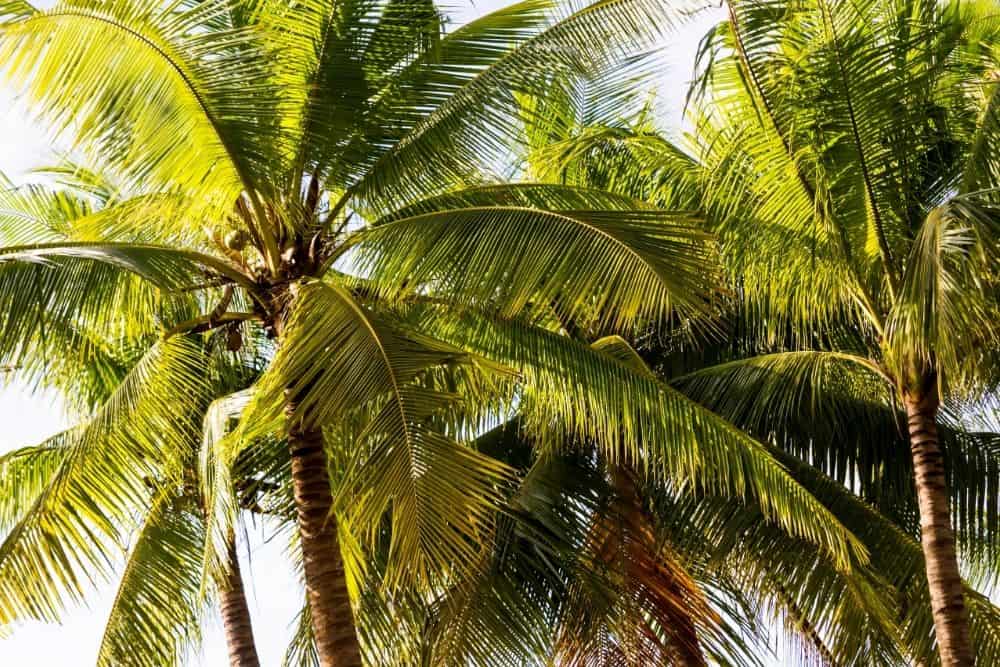
There are lots of different ways that you can identify a coconut tree, and although they have various different distinctive characteristics, there are some features that they have in common that can be easily identified. Some of the main features of a coconut tree are:
- The trunk is typically between 15 and 17 feet long
- The feathery shaped leaves are around 4 feet wide
- The tree holds fibrous covered fruit
- These trees have slender and textured trunks
- Most coconut tree species will grow to around 80 feet tall
- The base of the tree is thick, and the top of the tree is capped by growth of fronds
How To Tell If It Is A Palm Tree
On the other hand, even though coconut trees and palm trees do look quite similar, there are some ways to tell them apart. Some of the main characteristics of a palm tree are:
- They have leaves with fan-shaped fronds
- Some of them have longer and slender single trunks
- The dwarf variety has short and fat trunks
- The smaller palm trees have clustered trunks with between 3 and 4 trunks that grow together
- Some palm trees will have a smooth and slender trunk
- Some dwarf palm trees will feature bushy pinnate fronds that pop out with the trunk
- None of these trees can produce good firewood
It can be more difficult to identify specific types of palm trees as there are so many different types.
Some palm trees will even feature a gray-brown color, whereas others will have trunks that are covered in other turns. One unique aspect is that the dwarf and small palm trees are used by most households to grow in the compound.
Most people that want to grow palm trees in their yard will prefer to choose those that are shorter because they will have shallow roots. We will talk about some of the most commonly used palm trees for this purpose below.
Pygmy Date Palm
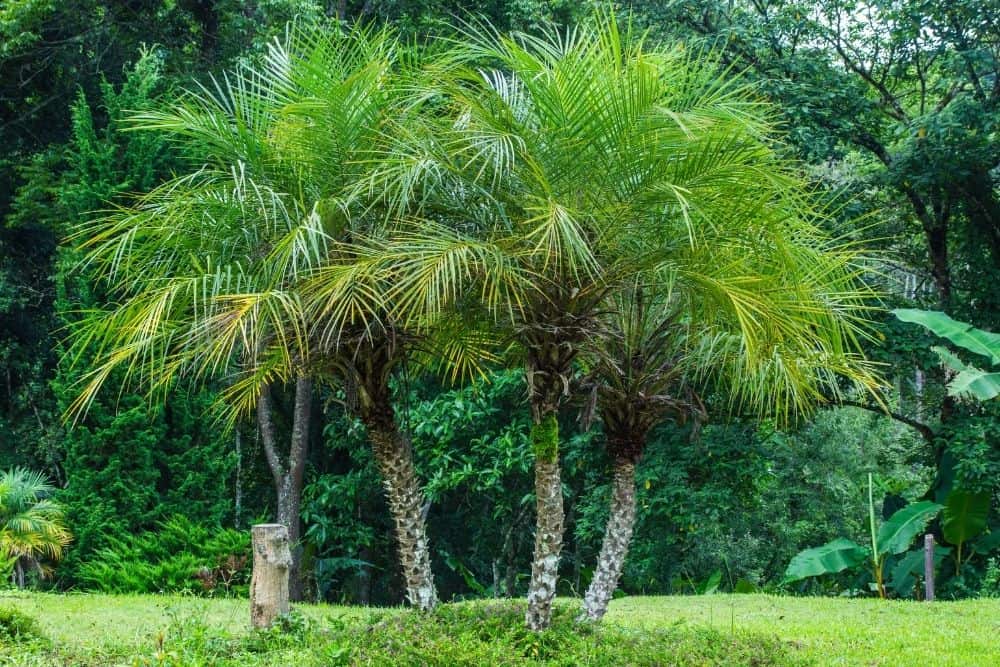
This is a small type of palm tree that will not grow to be taller than 10 foot. It can be identified through the single stem that features bushy pinnate-shaped fronds. This tree is a common ornamental flowering tree that is ideal for subtropical climates.
Triangle Palm
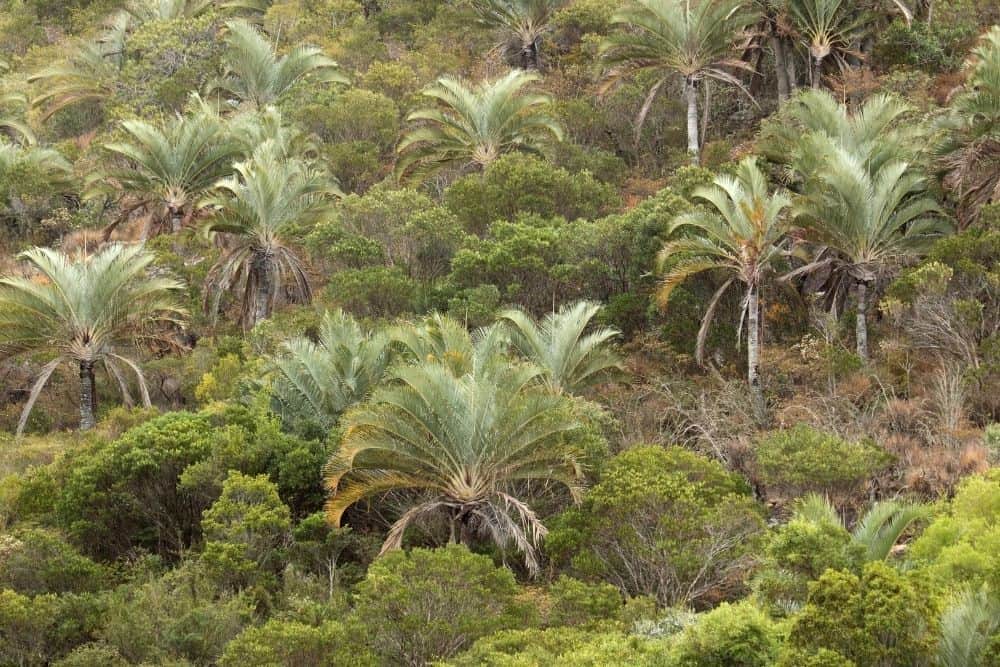
This type of palm tree is small to medium sized and it can be grown in a small garden. It can be indefinite through its pinnate fronds that can grow up to 8 feet in size. Interestingly, its leave point at 120 degrees, providing a triangular shape at the cross section. This is an ideal tree for tropical climates.
Mediterranean Dwarf Palm
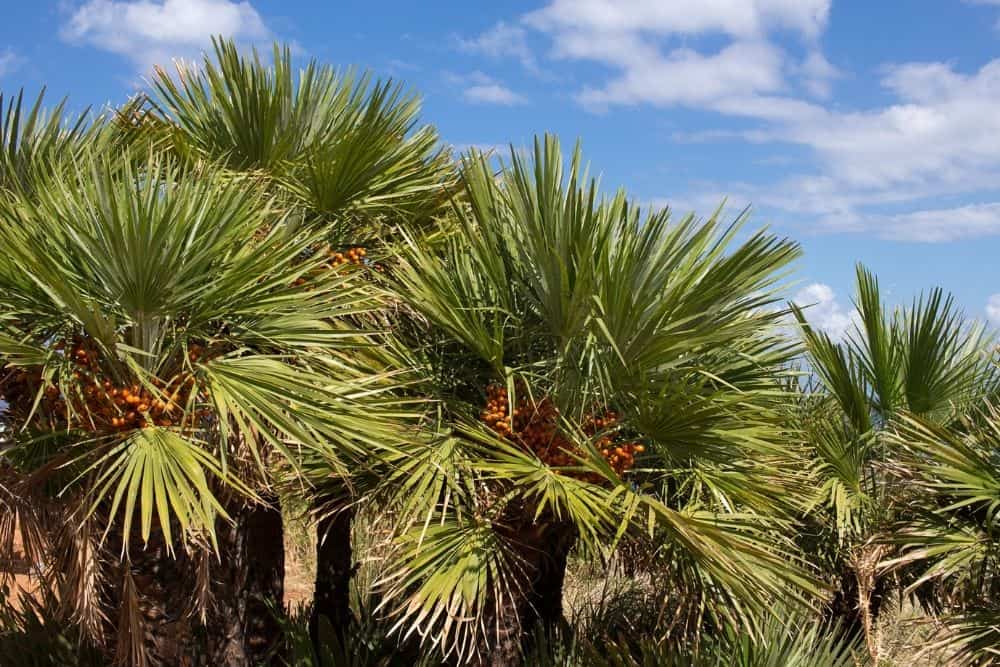
The Mediterranean dwarf palm tree is a type of flowering palm tree that has clustered trunks that make the tree appear like a shrub. It can grow well in warmer climates to an average height of around 20 feet. It is often valued for its excellent coloring.


